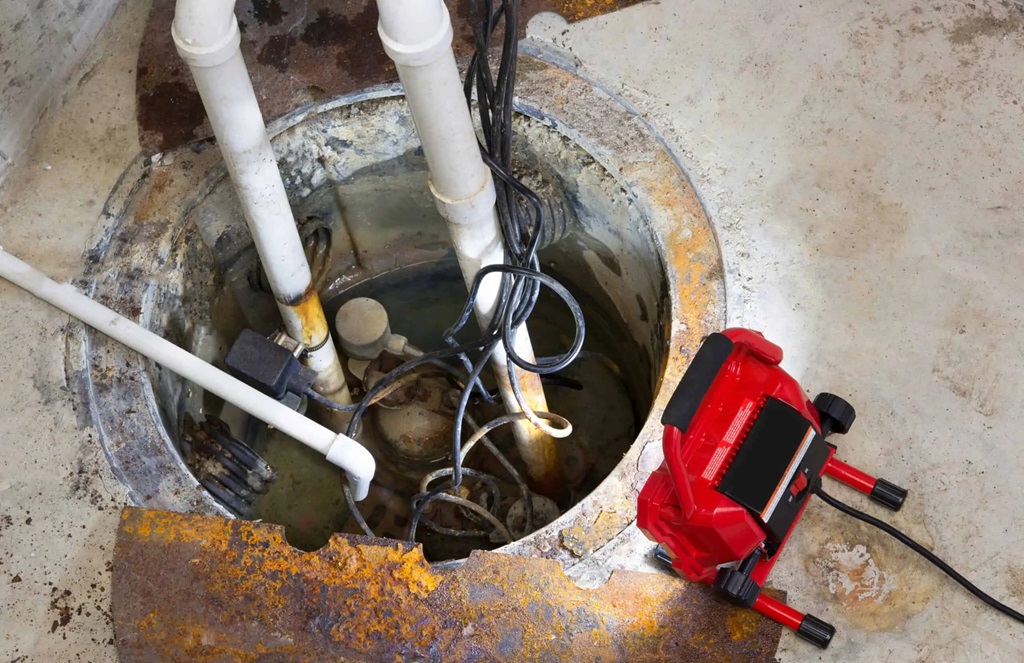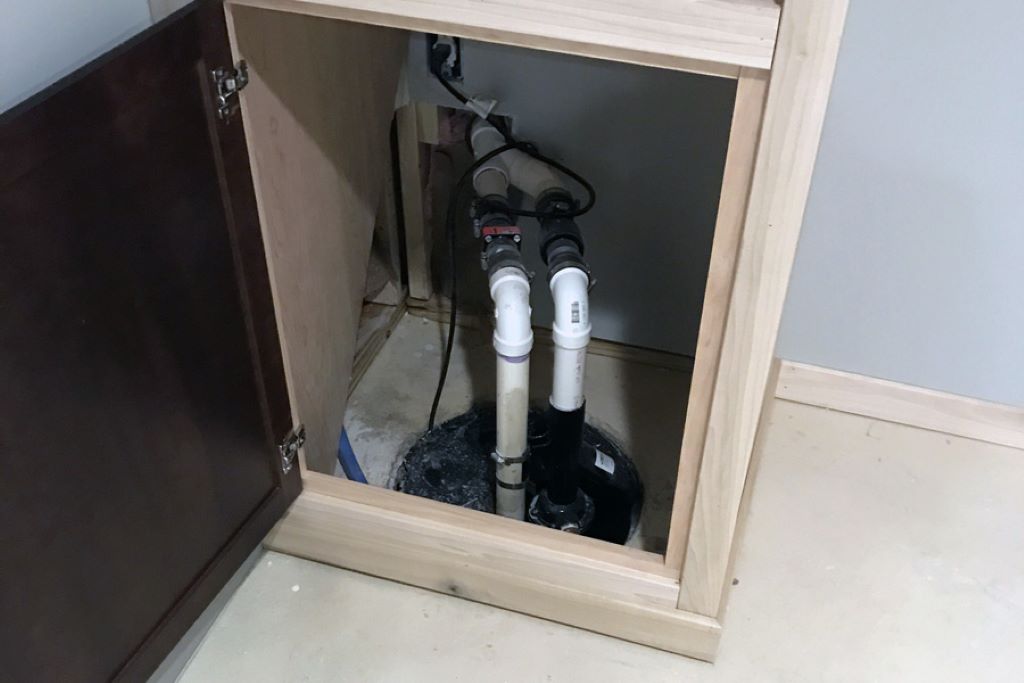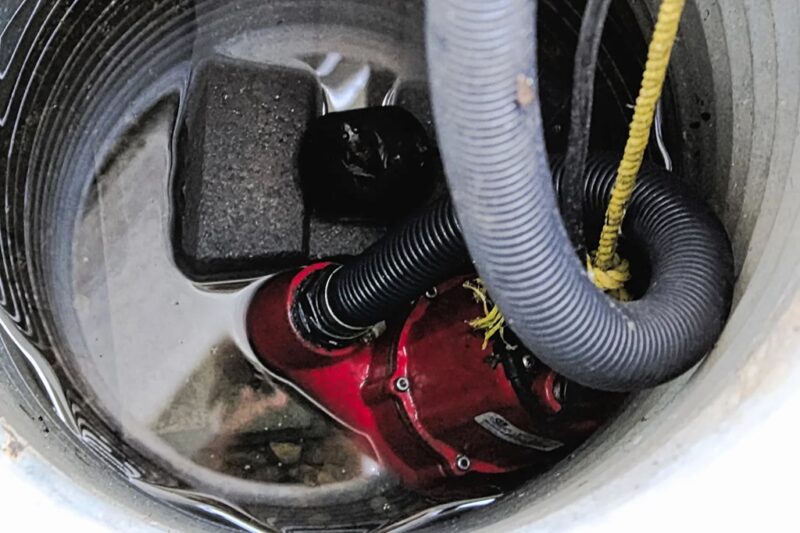To install a sump pump, locate the lowest area in your basement, dig a hole for the sump pit, and place the pump inside. Cover the pit with a lid and connect the pump to a discharge pipe leading outside. Are you facing a flooded basement or excess moisture issue in your home? Installing a sump pump can help you effectively manage and prevent water damage. In this guide, we will discuss the step-by-step process of how to install a sump pump in your basement.
By following these simple instructions, you will be able to safeguard your property against water-related issues and maintain a dry, secure living environment. So, let’s get started and learn how to install a sump pump in your basement in a few easy steps.
Importance Of Sump Pump

Installing a sump pump is crucial for preventing basement flooding. The sump pump helps to remove excess water, protecting your home from water damage and mold growth. Proper installation is key to ensuring the sump pump functions effectively.
Preventing Basement Flooding
A sump pump plays a crucial role in preventing basement flooding, which can cause significant damage to your home and belongings. When heavy rain or melting snow causes water to accumulate around your foundation, it can seep into your basement, leading to dampness, mold growth, and structural issues. However, the issue of a sump pump tripping breaker is a common concern that homeowners face. With the installation of a sump pump, you can actively remove water from your basement, ensuring that it stays dry, and reducing the risk of flooding and associated problems. For more insightful home maintenance tips, visit Snapbuzzz.com.
Protecting Property From Water Damage
Water damage can wreak havoc on your property, leading to costly repairs and the potential loss of irreplaceable items. A sump pump helps protect your property by actively removing water that may accumulate in your basement or crawl space. By effectively diverting water away from your home’s foundation, a sump pump prevents water damage to your walls, floors, furniture, appliances, and other valuable possessions. Not only does this help maintain the structural integrity of your home, but it also saves you from the extensive expenses and emotional stress caused by water damage events.
Choosing The Right Sump Pump
Installing a sump pump requires careful consideration to ensure the right choice for your needs. Follow these steps to install a sump pump effectively and keep your basement dry.
Assessing Basement Size And Water Infiltration
When it comes to choosing the right sump pump for your basement, it’s important to consider the size of your basement and the level of water infiltration you typically experience. Assessing these factors will help determine the capacity and power requirements of the sump pump you need.
The size of your basement is a crucial factor to consider. Whether you have a small, medium, or large basement, it’s essential to choose a sump pump that can efficiently handle the volume of water that may accumulate during heavy rain or flooding. By accurately assessing the size and layout of your basement, you can choose the appropriate sump pump capacity.
In addition to the size of your basement, you should also evaluate the level of water infiltration you typically experience. If you have a high water table or live in an area prone to frequent heavy rains, you may require a more powerful sump pump to effectively remove excess water and prevent basement flooding. On the other hand, if your basement only experiences minimal water infiltration, a less powerful sump pump may be sufficient.
Considering Power Source And Pump Type
When selecting a sump pump, it’s vital to consider the power source and type of pump that best suits your needs. These factors will affect the functionality and reliability of the sump pump.
Firstly, you need to determine the power source for your sump pump. Most sump pumps operate either on electricity or battery power. Electric-powered sump pumps are widely used and offer a consistent power supply. Battery-powered sump pumps, on the other hand, are essential in case of power outages or areas with unreliable electricity supply. Having a battery backup can provide added assurance during emergencies.
Secondly, it’s important to consider the type of sump pump that best suits your requirements. The two most common types are pedestal and submersible sump pumps. Pedestal sump pumps have the motor located above the sump pit and are easier to service but may be louder. Submersible sump pumps, on the other hand, are installed inside the sump pit, making them quieter but more challenging to access for maintenance.
By considering both the power source and pump type, you can ensure that your sump pump is reliable, functional, and suitable for the specific needs of your basement.
Preparing For Installation
Clearing Access To Sump Pit
Before installing a sump pump, it’s crucial to ensure that the sump pit area is clear and accessible. This involves removing any debris, obstructions, or accumulated sediment in and around the sump pit. Clearing access to the sump pit will facilitate the installation process and allow for the proper positioning of the sump pump.
Gathering Necessary Tools And Materials
Before starting the sump pump installation, it’s essential to gather all the required tools and materials. This includes tools such as a shovel, hacksaw, screwdriver, adjustable wrench, and PVC primer and cement. Additionally, necessary materials such as PVC pipes, check valves, and the sump pump itself need to be acquired.
Step-by-step Installation Process
Installing a sump pump can be a crucial step in protecting your basement from flooding and water damage. In this step-by-step installation process, we will walk you through the necessary steps to ensure a successful installation. From positioning the sump pump in the pit to connecting and testing the pump, we’ve got you covered.
Positioning The Sump Pump In The Pit
- Start by finding the lowest point in your basement where water tends to accumulate. This is usually near the flooring drain or against a wall where moisture seeps in.
- Next, dig a sump pump pit in that location. The pit should be deep enough to house the pump while allowing sufficient room for water accumulation. Generally, a depth of around 24 inches is recommended.
- Ensure that the pit is wide enough to accommodate the pump, with some space for easy access during maintenance and repairs.
Connecting And Testing The Pump
- Now it’s time to connect the sump pump. Begin by connecting the discharge pipe to the pump outlet, ensuring a tight and secure fit. This pipe will carry water away from your basement and out of your home.
- Use a check valve to prevent backflow and make sure it is properly installed between the pump and the discharge pipe.
- Connect the power cord of the sump pump to a grounded electrical outlet. A GFCI (Ground Fault Circuit Interrupter) outlet is recommended for safety.
- Fill the sump pit with water to test the pump. The pump should activate automatically and start removing the water efficiently. If it does not activate or does not pump out the water effectively, check the power supply and connections.
- Lastly, test the float switch by manually raising and lowering it. The pump should turn on and off accordingly based on the float switch’s position.
Remember to regularly inspect and maintain your sump pump to ensure its optimal performance. It is recommended to test it every few months, especially before the rainy season or periods of high water accumulation. You can also consider installing a backup power source or alarm system for added peace of mind.
Maintenance And Troubleshooting
Once you have successfully installed a sump pump in your basement, it is important to ensure that it remains in optimal working condition. Regular maintenance and troubleshooting are key to keeping your sump pump functioning effectively and preventing any potential issues. In this section, we will discuss some important aspects of sump pump maintenance and how to address common problems that may arise.
Regular Check-ups And Cleaning
To keep your sump pump operating smoothly, it is essential to conduct regular check-ups and cleaning. These simple maintenance tasks can help identify any potential issues early on and prevent any major malfunctions. Here are some key steps to follow:
- Visually inspect the sump pump and ensure that it is still properly installed and secure in its designated location. Check for any signs of damage or wear and tear.
- Test the float switch by pouring water into the sump pit. Make sure that the pump starts automatically and drains the water efficiently. If the pump fails to activate, it may require cleaning or adjustment.
- Clean out the sump pit by removing any debris or sediment that may have accumulated over time. This will prevent clogging and ensure proper drainage.
- Inspect the discharge pipe and make sure it is not blocked or obstructed. Clear any debris or obstructions that may hinder the flow of water.
- Check the power source and ensure that it is properly connected and functioning. Consider using a battery backup system to ensure that the sump pump remains operational during power outages.
Identifying And Addressing Common Issues

Despite regular maintenance, sump pumps can still experience common issues that may require troubleshooting. Here are some common problems that may arise and how to address them:
| Issue | Solution |
| The sump pump doesn’t turn on | Check the power source and ensure that it is connected. Test the float switch and clean or adjust if necessary. Consider replacing the battery backup if applicable. |
| The sump pump runs continuously | Inspect the float switch for any debris or obstruction. Clean or adjust the switch if needed. Check the discharge pipe for blockages or clogs. |
| The sump pump makes loud noises | Inspect the impeller and remove any debris or objects that may be causing the noise. Lubricate the motor if necessary. If the noise persists, contact a professional. |
| Water leakage from the sump pit | Check for cracks or damage in the sump pit. Repair any visible leaks. Ensure that the pump is properly aligned and secure in the pit. |
By regularly checking and cleaning your sump pump, as well as addressing any common issues that may arise, you can ensure that your basement remains protected from potential water damage. Remember, if you encounter any complex problems or are unsure about performing maintenance tasks, it is always best to seek professional assistance.
Frequently Asked Questions On How To Install A Sump Pump
How Does A Sump Pump Work?
A sump pump works by collecting water that accumulates in a sump pit and then pumps it away from your home through a discharge pipe. When the water level reaches a certain point, the pump is activated and it removes the water to prevent flooding.
Why Should I Install A Sump Pump?
Installing a sump pump is crucial for preventing basement flooding and water damage. It helps keep your basement dry by removing excess water and preventing groundwater from seeping into your home. It can also protect the foundation of your house from damage caused by water accumulation.
Where Should I Install A Sump Pump?
A sump pump should be installed in the lowest part of your basement or crawl space, known as the sump pit. This ensures it collects water that has accumulated in the area. It is important to choose a location where the pump can discharge the water safely and away from your home’s foundation.
How Often Should A Sump Pump Be Replaced?
On average, a sump pump should be replaced every 5 to 7 years. However, this can vary depending on factors such as the pump’s quality, usage, and maintenance. It is important to monitor the condition of your sump pump regularly and replace it if you notice any signs of malfunction or aging.
Conclusion
Installing a sump pump is essential for keeping your basement dry and protecting your home from water damage. By following these simple steps, you can ensure the safety and longevity of your property. Proper installation and maintenance of a sump pump will provide peace of mind and safeguard your home from potential flooding.

